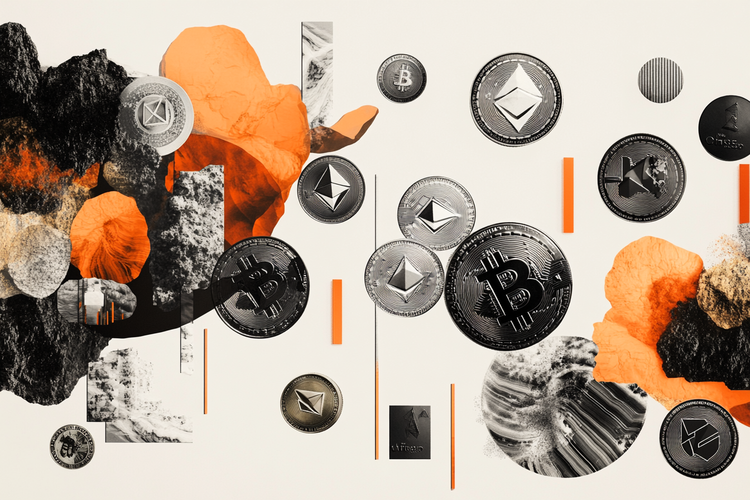Retail Titans Walmart & Amazon Charge Into Crypto With Stablecoin Plans – Mainstream Adoption Incoming?

Brace for impact—the retail apocalypse just got a blockchain upgrade. Walmart and Amazon are quietly building stablecoin war chests, and legacy finance won’t know what hit it.
From Aisles to Assets
The move signals a seismic shift: when companies responsible for 12% of US retail revenue start flirting with digital currencies, even your boomer uncle’s pension fund manager starts sweating. No more ‘crypto is a fad’ talk—this is corporate America placing billion-dollar bets.
The Real CBDC Competitors
Forget central bank digital currencies dragging their feet. Private stablecoins backed by retail giants could achieve mass adoption before governments finish their third feasibility study. Amazon’s potential ‘PayWithCrypto’ button? Walmart’s blockchain-powered supply chain token? Watch banks scramble to ‘innovate’ now that their lunch is getting eaten.
Cynical Take
: Nothing accelerates financial ‘progress’ like the threat of Bezos and Walton family members becoming shadow central bankers. The irony? Stablecoins might finally achieve what decades of regulatory hand-wringing couldn’t—forcing traditional finance to work faster than a Prime delivery.
Walmart and Amazon eye stablecoins
The adoption of digital tokens pegged to the US Dollar (USD) could drive cash volumes and card transactions from banks and payment institutions, such as Mastercard and Visa.
Amazon and Walmart are two of the world''s largest retailers, boating billions of dollars in yearly sales. According to Statista, Amazon''s sales figures have been steadily rising over the years, reaching $638 billion in net revenue worldwide in 2024.
The majority of Amazon''s revenue is generated through retail sales, which could be processed using the corporate stablecoin.
US retail giant Walmart''s net sales totaled $122 billion for the fiscal year ended January 2025, representing a nearly $7 billion increase from the previous year.
Stablecoins are tokens designed to mirror the value of stable currencies, such as the US Dollar, a basket of assets or other fiat currencies. This asset class aims to offer a digital alternative to cryptocurrencies, which are often associated with high volatility, making them less suitable for everyday transactions.
US lawmakers advance GENIUS Act
Interest in the stablecoin asset class is growing rapidly amid the advancement of the Guiding and Establishing National Innovation for US Stablecoins (GENIUS) Act in the US Senate.
The lawmakers voted 68–30 to invoke cloture on a substitute amendment to the stablecoin bill, paving the way for a final vote that could take place early next week.
The bipartisan bill, sponsored by Senators Bill Hagerty, Cynthia Lummis, Kirsten Gillibrand and Tim Scott, is expected to play a significant role in modernizing payment rails in the US and ensure the country remains at the forefront of financial innovation.
Walmart and Amazon''s interest in stablecoin offerings comes several weeks after major US banks, including JPMorgan Chase, Bank of America, Citigroup, and Wells Fargo, announced that they were engaged in early-stage talks about a joint stablecoin project.
Cryptocurrency prices FAQs
How do new token launches or listings affect cryptocurrency prices?
Token launches influence demand and adoption among market participants. Listings on crypto exchanges deepen the liquidity for an asset and add new participants to an asset’s network. This is typically bullish for a digital asset.
How do hacks affect cryptocurrency prices?
A hack is an event in which an attacker captures a large volume of the asset from a DeFi bridge or hot wallet of an exchange or any other crypto platform via exploits, bugs or other methods. The exploiter then transfers these tokens out of the exchange platforms to ultimately sell or swap the assets for other cryptocurrencies or stablecoins. Such events often involve an en masse panic triggering a sell-off in the affected assets.
How do macroeconomic releases and events affect cryptocurrency prices?
Macroeconomic events like the US Federal Reserve’s decision on interest rates influence crypto assets mainly through the direct impact they have on the US Dollar. An increase in interest rate typically negatively influences Bitcoin and altcoin prices, and vice versa. If the US Dollar index declines, risk assets and associated leverage for trading gets cheaper, in turn driving crypto prices higher.
How do major crypto upgrades like halvings, hard forks affect cryptocurrency prices?
Halvings are typically considered bullish events as they slash the block reward in half for miners, constricting the supply of the asset. At consistent demand if the supply reduces, the asset’s price climbs.

